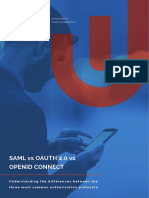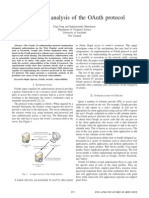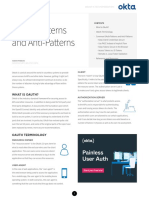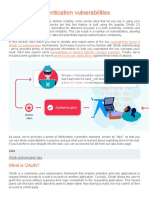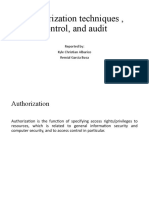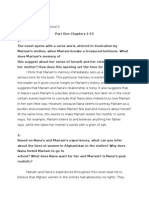0% found this document useful (0 votes)
25 views5 pagesAPI Security Architect
The document discusses OAuth, an open-standard authorization protocol, and its distinction from authentication processes, emphasizing the importance of both for cybersecurity. It outlines the roles within OAuth, the types of grants available, and introduces related concepts like OpenID Connect and JSON Web Tokens. Additionally, it highlights potential vulnerabilities and protective measures for OAuth flows, including certificate pinning as a security technique against man-in-the-middle attacks.
Uploaded by
aharonno2020Copyright
© © All Rights Reserved
We take content rights seriously. If you suspect this is your content, claim it here.
Available Formats
Download as DOCX, PDF, TXT or read online on Scribd
0% found this document useful (0 votes)
25 views5 pagesAPI Security Architect
The document discusses OAuth, an open-standard authorization protocol, and its distinction from authentication processes, emphasizing the importance of both for cybersecurity. It outlines the roles within OAuth, the types of grants available, and introduces related concepts like OpenID Connect and JSON Web Tokens. Additionally, it highlights potential vulnerabilities and protective measures for OAuth flows, including certificate pinning as a security technique against man-in-the-middle attacks.
Uploaded by
aharonno2020Copyright
© © All Rights Reserved
We take content rights seriously. If you suspect this is your content, claim it here.
Available Formats
Download as DOCX, PDF, TXT or read online on Scribd
/ 5

















